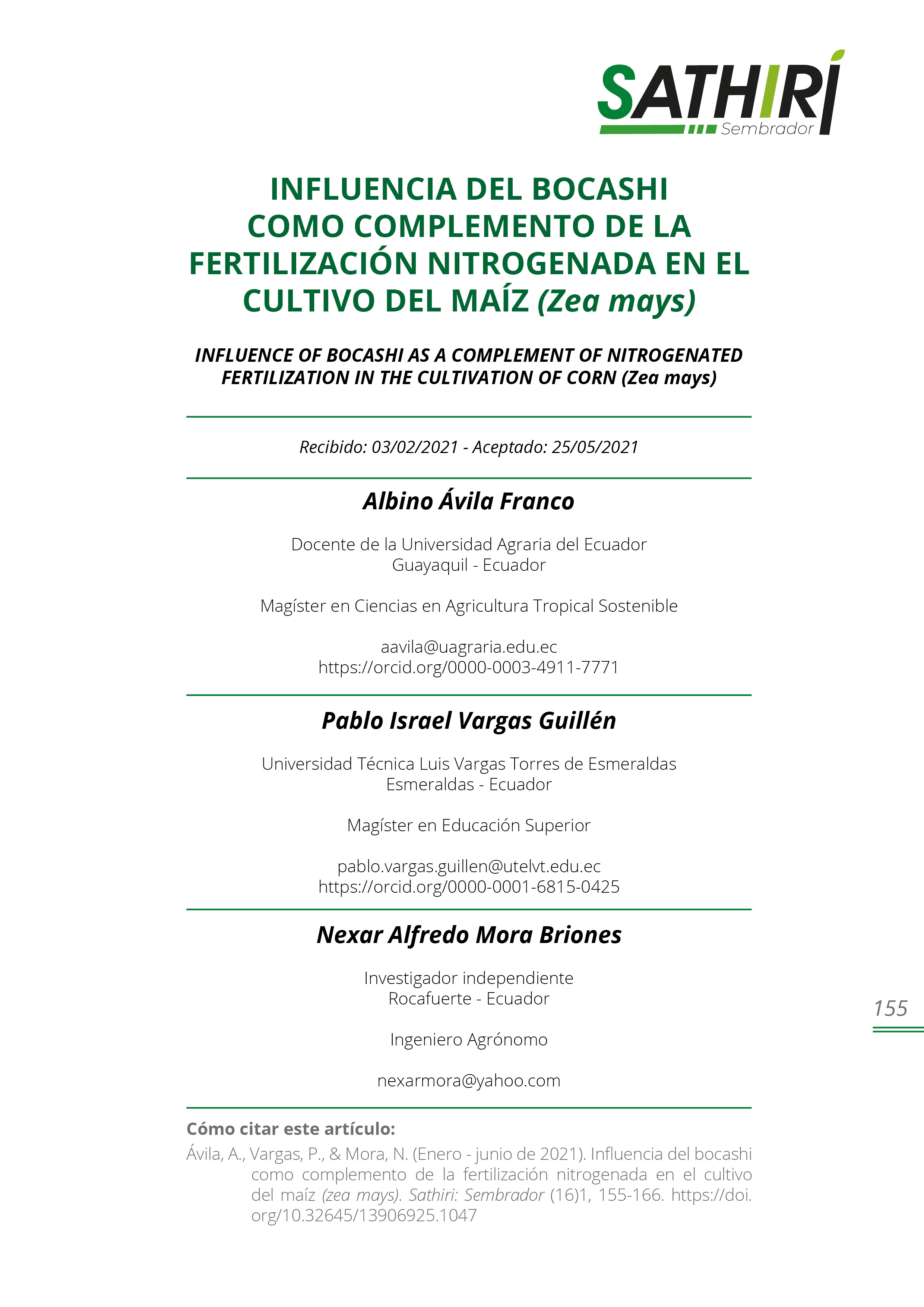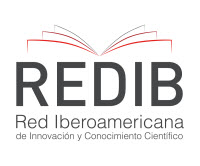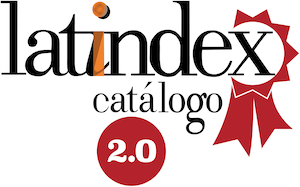Influence of bocashi as a complement of nitrogenated fertilization in the cultivation of corn (zea mays)
DOI:
https://doi.org/10.32645/13906925.1047Keywords:
Organic waste, bocashi, external dependence, environmentAbstract
This study was carried out to present an alternative to the use of organic vegetable residues that exist in the area (Canton Rocafuerte, province of Manabí) to produce bocashi, and to use it as a complement in the production of maize as fertilizer to the soil and to improve its agronomic characteristics Of the culture, for which a complete block design was used at random, with four replicates and five treatments: T1 Chemical fertilization NPK, T2 chemical fertilization 75% NPK plus bocashi; T3 chemical fertilization 50% NPK plus bocashi; T4 chemical fertilization 25% NPK plus bocashi and T5 bocashi. The variables evaluated in the present study were: plant height, stem diameter, ear insertion height, number of ears per plant, length and diameter of ears, number of rows per ears, weight 100 seeds, number of ears / plot And net weight kg / ha. Those that did not present statistical differences in the responses to the treatments; However, treatments T4 chemical fertilization 25% plus bocashi 10 TM and T2 fertilization chemical 75% plus bocashi 10 TM, showed the highest values in the variable net weight, with 5738.93 kg / ha and 5631.6 kg / ha , Respectively. Many are expected to adopt this practical way of reducing the external dependence of chemical fertilizers in a time of economic austerity of the country, and that contribute to the transformation of agriculture more friendly to the environment.

Downloads
Published
Issue
Section
License
Copyright (c) 2021 Albino Ávila Franco, Pablo Israel Vargas Guillén, Nexar Alfredo Mora Briones

This work is licensed under a Creative Commons Attribution-NonCommercial-NoDerivatives 4.0 International License.
El autor mantiene los derechos morales e intelectuales de su obra, autorizando a la editorial de la revista Sathiri la difusión y divulgación de su contenido con fines estrictamente académicos y de investigación, sin fines de lucro. Así mismo, se autoriza que la obra sea descargada y compartida con otras personas, siempre y cuando no sea alterada y se reconozca su autoria.




















